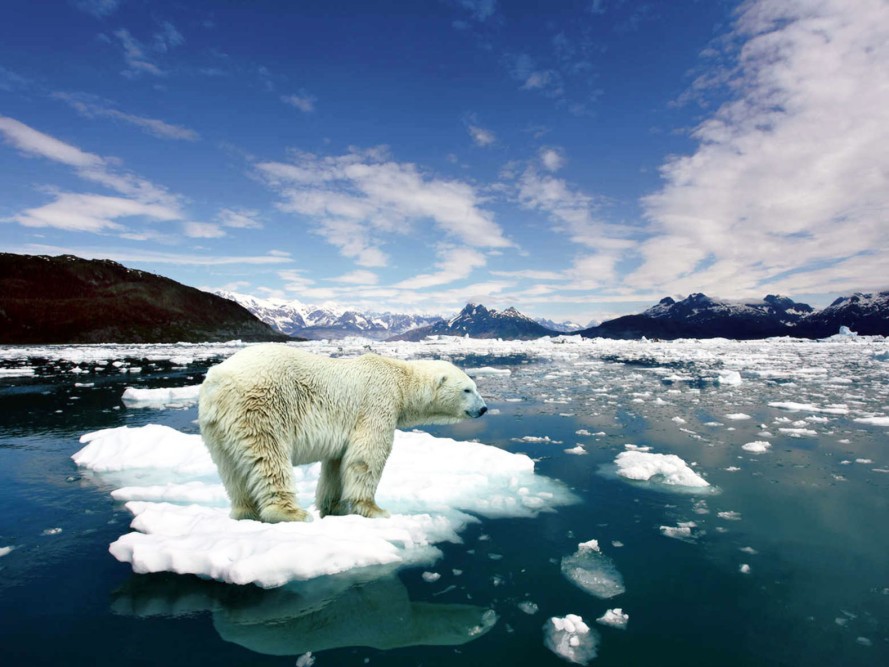
Climate change is an issue primarily because the world cannot come to an agreement on whether or not it’s real. Before I even discuss it, I want to talk about how I see the issues. Throughout my life I had heard people arguing over climate change and if it existed or not, and I really didn’t listen. I’m not one to get into arguments with people simply because I don’t like heated conversations, so when it comes to controversial topics, I am not a fan. That being said, it took me a while to come up with how I actually felt about the reality of climate change. During my seminar class last semester, we discussed a lot of environmental issues, one being climate change, and we watched a movie on it. We watched Before the Flood with Leo DiCaprio and I have to say this movie really opened my eyes to the actual issues. I am now a believer that climate change exists, and these issues really scare me. But enough about me, let’s talk about climate change.
While consensus among nearly all scientists, scientific organizations, and governments is that climate change is happening and is caused by human activity, a small minority of voices questions the validity of such assertions and prefers to cast doubt on the preponderance of evidence. Climate change deniers often claim that recent changes attributed to human activity can be seen as part of the natural variations in Earth’s climate and temperature, and that it is difficult or impossible to establish a direct connection between climate change and any single weather event, such as a hurricane. While the latter is generally true, decades of data and analysis support the reality of climate change—and the human factor in this process. In any case, economists agree that acting to reduce fossil fuel emissions would be far less expensive than dealing with the consequences of not doing so. 
Just to add since this issue pertains to my future career specifically, I do not want to become a petroleum engineer simply for the money, as a lot of people might think. I know that what happens in this oil and gas industry is harmful to the planet, and a goal of mine is to reduce the insanely large carbon footprint it leaves.
Some of the other main causes of climate change include agriculture and deforestation, which I talked about in a previous post. Yes agriculture provides us with the food we eat everyday, but it poses a huge threat on the climate. Industrial agriculture — the practice currently employed by the majority of the developed world — has a hugely negative impact on global warming. The U.S. food system contributes nearly 20 percent of the nation’s carbon dioxide emissions; on a global scale, figures from the Intergovernmental Panel on Climate Change (IPCC) say that agricultural land use contributes 12 percent of global greenhouse gas emissions. Supporting industrial agriculture perpetuates these disturbing practices.
It’s not just the actual farming that makes industrial agriculture so detrimental. In almost every case, land use changes — say, deforestation, or paving over green space for suburban expansion — result in more surface warming. One exception: When deforestation occurs to create more agricultural land. That’s right, deforestation results in surface warming, with the exception being conversion to agriculture.
The difference here is that we’re talking surface warming, rather than changing atmospheric conditions, and, while chopping down a forest might make it feel cooler, forests have a much greater potential to carbon dioxide than does monocultural, industrial agriculture. The bottom line: The effect of land use conversion on rising surface temps is an underestimated component of global warming, and just because it feels cooler today than it did yesterday does not mean big-time climate change is right around the corner.
Even small increases in Earth’s temperature caused by climate change can have severe effects. The earth’s average temperature has gone up 1.4° F over the past century and is expected to rise as much as 11.5° F over the next. That might not seem like a lot, but the average temperature during the last Ice Age was about 4º F lower than it is today.
Rising sea levels due to the melting of the polar ice caps (again, caused by climate change) contribute to greater storm damage; warming ocean temperatures are associated with stronger and more frequent storms; additional rainfall, particularly during severe weather events, leads to flooding and other damage; an increase in the incidence and severity of wildfires threatens habitats, homes, and lives; and heat waves contribute to human deaths and other consequences.
So we know the threat is real, but what can we do to prevent climate change from being exacerbated even more? Some small steps you can take in your own life are to use less electricity by turning off your lights when you don’t need

them, driving less, switching to LED bulbs and eating less meat. On a more global scale, leaders have come to an agreement on how to curb the harmful greenhouse gases each nation emits into the atmosphere, and steps are being taken to plant more forests (which act as natural carbon sinks). Every bit helps, but in order for us to reverse the current course the Earth is on, the United States needs to commit to the Paris Agreement and, along with the rest of the world, work towards a greener planet.
